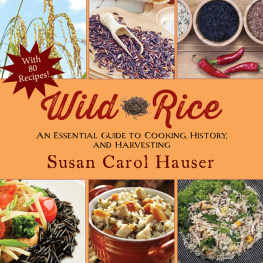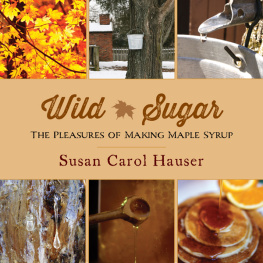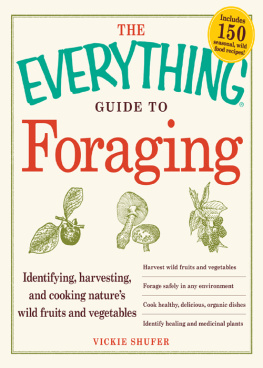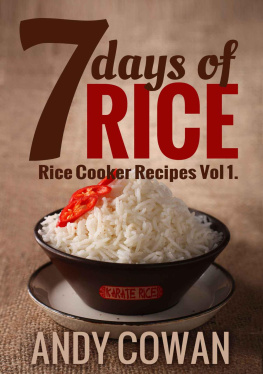Other Books by Susan Carol Hauser
NATURAL HISTORY
Wild Sugar: The Pleasures of Making Maple Syrup
A Field Guide to Poison Ivy, Poison Oak, and Poison Sumac: Prevention and Remedies
A Field Guide to Ticks: Prevention and Treatment of Lyme Disease and Other Ailments Caused by Ticks, Scorpions, Spiders, and Mites
NONFICTION
My Kind of River Journey: Seeking Passage on the Mississippi
Full Moon: Reflections on Turning Fifty
Which Way to Look
Meant to Be Read Out Loud
You Can Write a Memoir
Girl to Woman: A Gathering of Images
What the Animals Know
POETRY
Redpoll on a Broken Branch
Outside after Dark: New & Selected Poems
Forager
Copyright 2000 Susan Carol Hauser
Introduction 2014 by Susan Carol Hauser
First Skyhorse Publishing edition 2014
All rights reserved. No part of this book may be reproduced in any manner without the express written consent of the publisher, except in the case of brief excerpts in critical reviews or articles. All inquiries should be addressed to Skyhorse Publishing, 307 West 36th Street, 11th Floor, New York, NY 10018.
Skyhorse Publishing books may be purchased in bulk at special discounts for sales promotion, corporate gifts, fund-raising, or educational purposes. Special editions can also be created to specifications. For details, contact the Special Sales Department, Skyhorse Publishing, 307 West 36th Street, 11th Floor, New York, NY 10018 or .
Skyhorse and Skyhorse Publishing are registered trademarks of Skyhorse Publishing, Inc., a Delaware corporation.
Visit our website at www.skyhorsepublishing.com.
10 9 8 7 6 5 4 3 2 1
Library of Congress Cataloging-in-Publication Data is available on file.
Cover design by Eve Siegel
Cover photo credit Thinkstock
Print ISBN: 978-1-62914-556-3
Ebook ISBN: 978-1-63220-191-1
Printed in China
Photographs by Susan Carol Hauser, unless otherwise noted.
10 9 8 7 6 5 4 3 2 1
PERMISSIONS
Grateful acknowledgement is made to the following for permission to reprint material:
For Photographs and Images:
The Minnesota Historical Society, The Beltrami County Historical Society, Greg Kearns, Michael Haramis, The University of Minnesota Agricultural Experiment Station, David L. Hansen
For Captions, Charts, and Graphs:
Thomas Vennum, E. A. Oelke, Greg Britton, Paul Addis, R.A. Porter, Alan Grombacher, University of Minnesota Agriculture Extension Service, The University of Minnesota Press, Cereal Foods World
For Recipes, Charts, and Graphs:
Minnesota Cultivated Wild Rice Council, Gourmet Harvest
In memory of Bill, ricing partner.
My thanks to
Dave Carlson for the wild rice canoe trip on the Turtle River, Erika Bailey-Johnson, Warren Johnson, and David L. Hansen for photographs, Carol Jessen-Klixbull for her fascination with wild rice, Earl Nyholm for his insight, Brian Donovan for his love of language, Tom Vennum for his book, Wild Rice and the Ojibway People , E. A. Oelke for his precision and generosity, the wild rice experts who told me their stories, and my family, friends, and others who shared their recipes.

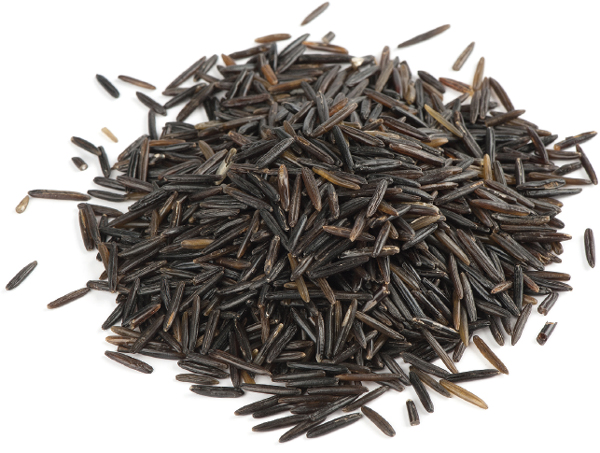
CONTENTS
5 Zizania palustris
Side Dishes
Pecan Wild Rice Side Dish
Wild, White, and Brown Rice Blends
Minnesota Wild Rice Side Dish
Henry Wellingtons Wild Rice
Herbed Wild Rice Pilaf
Kats Quinoa and Wild Rice Pilaf
Wild Rice in Squash
Stuffings
Wild Rice and White Wine Stuffing
Quick Wild Rice Stuffing
Wild Rice Dressing with Bacon
Desserts
Wild Rice Maple Cake
Quick and Surprisingly Good Wild Rice Pudding
Creamy Baked Custard Wild Rice Pudding
Snacks
Popped Wild Rice
Wild Rice Deviled Eggs
Beer
Wild Rice Beer
Wild Rice for a Crowd
Wild Rice Au Gratin
Wild Rice Stuffing
Wild Rice Saut
Wild Rice Oriental Soup
Lemon-Tarragon Wild Rice
Wild Rice Quiche Florentine
Tables
Chapter 2
Chapter 3
INTRODUCTION
Wild Rice was first published in hardcover in 2000. In 2001, it won a Minnesota Book Award and in 2004 it was issued in paperback. With this publication, it has a new publisher and many new photos although little about wild rice has changed over the years. It remains a natural and nutritious food, the same one that sustained North American peoples in centuries past as it does today.
Also unchanged since the first publication, is the contentious science and politics of Zizania palustris , wild rice. This humble plant might not seem at the outset to be a candidate for a complex controversy, but it is. Z. palustris is indigenous to the Upper Great Lakes Area of North America and nowhere else in the world. Yet today, the bulk of wild rice is harvested not in Minnesota, Wisconsin, or Canada but in California, where it is grown in cultivated paddies. The original seeds for California wild rice and for cultivated beds in Minnesota and Wisconsin came from natural beds in Minnesota. They have been selected for cultivated farming but they are still Z. palustris . Efforts to modify the seed for easier growing and harvesting have not, however, stopped with selection. The potential for abusefor genetic modification and hybridizationhave botanical, cultural, and ethical consequences. For example, genetically modified seeds would almost certainly find their way into natural wild rice beds, forever altering the true crop.
For the cook, the complexities of Z. palustris are more manageable. Chapter Two of Wild Rice sorts out the variables of buying and cooking wild rice: by color (black, brown, blond), origin (paddy, lake, river), size of the grain (long, short, thin, wide), method of harvest (hand, mechanical), and method of processing (hand, mechanical).
In the end, the best wild rice, in the past as in the present, is determined by individual taste preference and intended use. Lighter, broken rice works well in soup but not as a side dish. Smaller, lighter grains cook faster than larger, darker grains. The best way to understand wild rice is to cook and use it frequently. Cook a whole bag of it at one time and freeze it in one- or two-cup packets. Use it in soups and chili, stir it into pancakes, toss in black beans for a quick side dish or salad, or just heat it up, garnish with a splash of parmesan cheese, and eat it while standing in the kitchen. It is my favorite fast food: nutritious, healthful, and delicious.
Susan Carol Hauser
Puposky, Minnesota, 2014

Zizania palustris ready to harvest. University of Minnesota, David L. Hansen. Used with permission.
PROLOGUE: WILD RICE, RICER, RICING
North of Bemidji, Minnesota, on Beltrami County Highway Nine, if you follow the road far enough, you will come to a low spot in the terrain. First, there is a pasture that slopes toward the road and yields to a large pond, then there is a watercourse.

